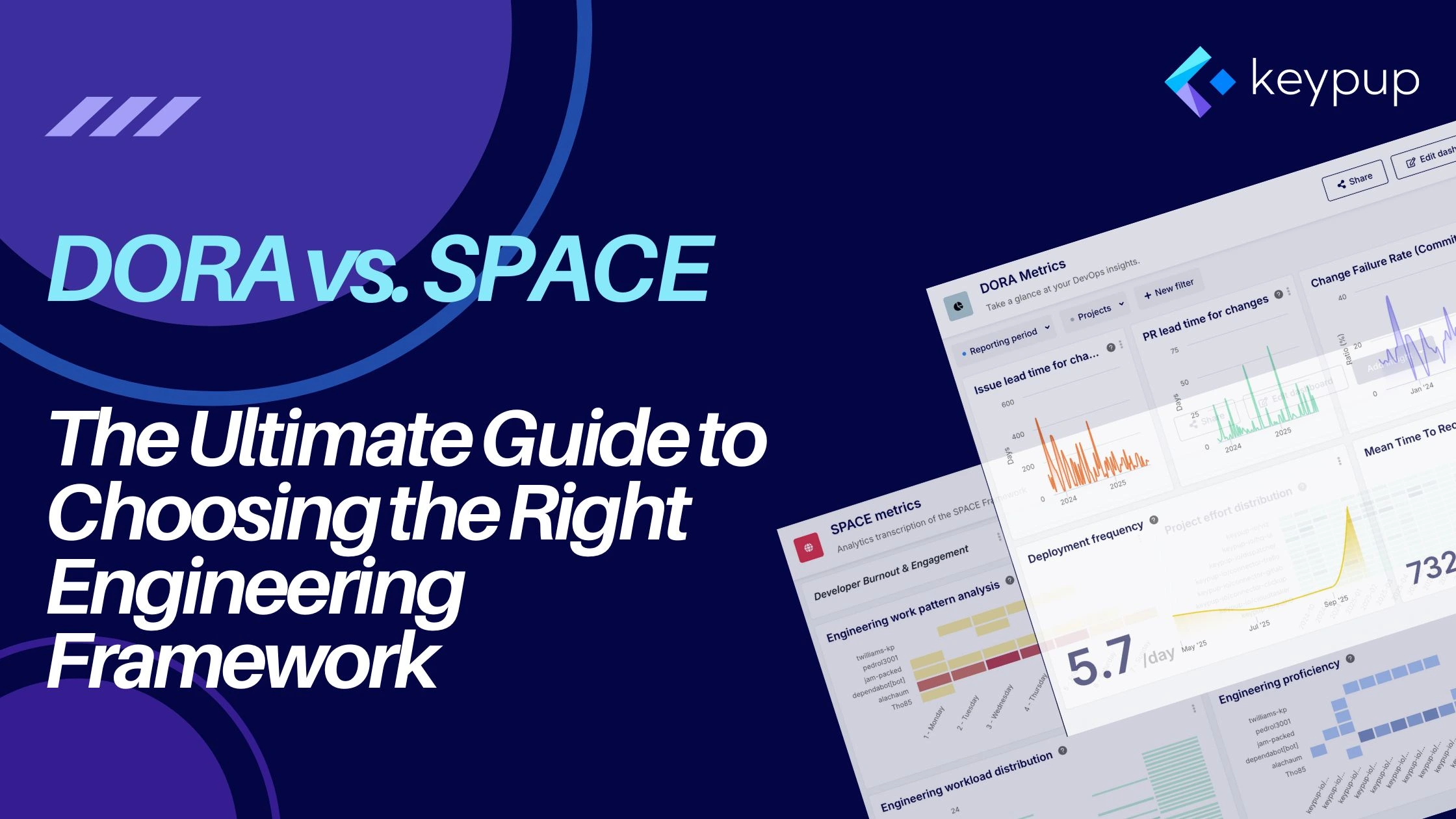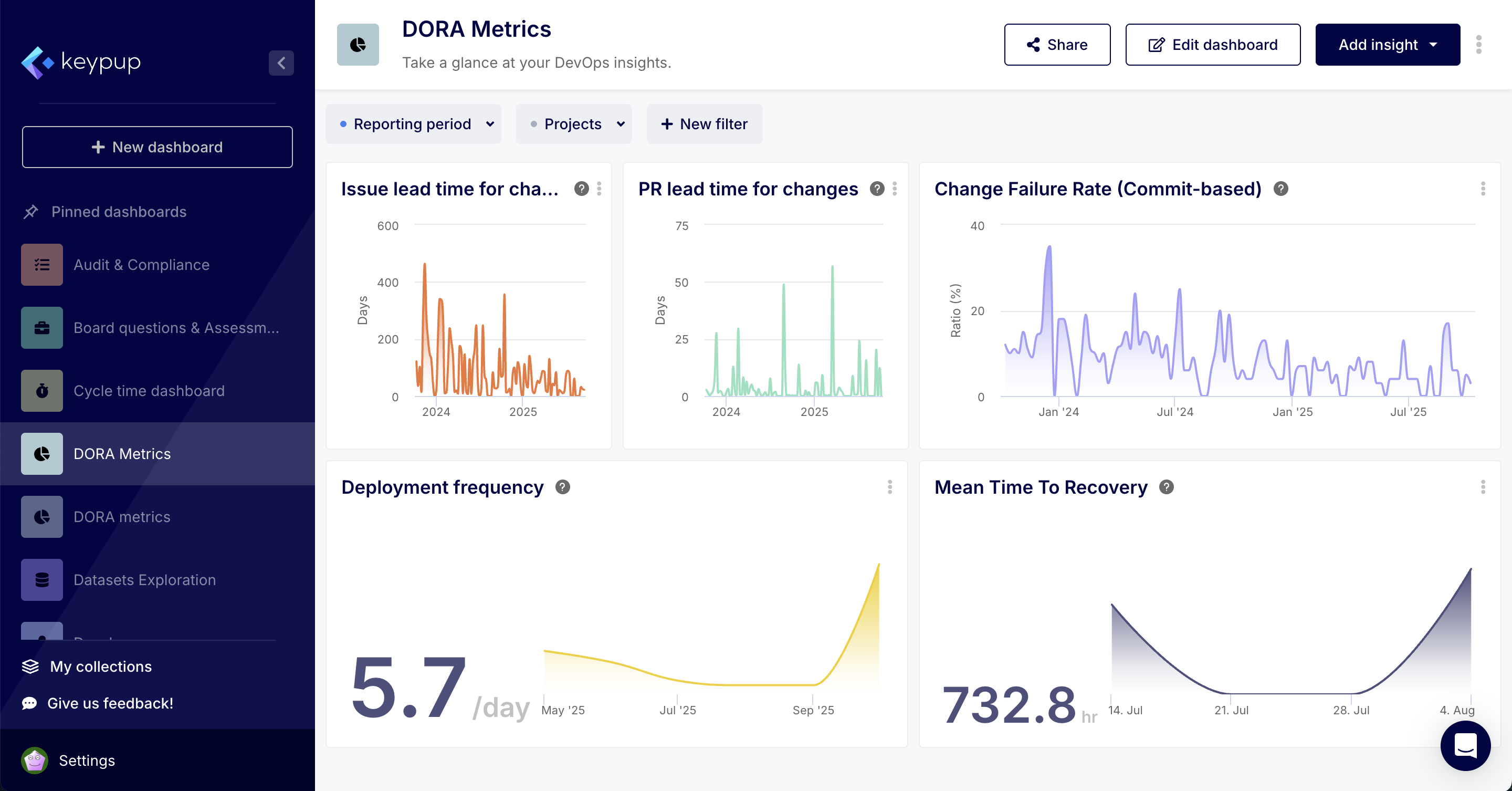DORA vs. SPACE: The Ultimate Guide to Choosing the Right Engineering Framework



In the world of software development, we're obsessed with performance. But what does "performance" truly mean? Is it how fast we ship code? Or is it the health, happiness, and effectiveness of the people writing it?
For years, engineering leaders have grappled witht his question, seeking a framework to measure and improve what matters. Two names consistently rise to the top: DORA and SPACE.
At first glance, they seem similar—both are data-driven methodologies for understanding engineering performance. However, they answer fundamentally different questions. DORA measures the health of your delivery pipeline, while SPACE measures the holistic health and productivity of your team.
Choosing the right one—or knowing how to use them together—is critical for building a truly high-performing engineering organization. This guide will break down what each framework is, when to use it, and how they can be combined for a complete picture of your team's effectiveness.
.webp)
Born from years of research by Google's DevOps Research and Assessment (DORA) team, the DORA metrics are four simple indicators that measure the performance and stability of a software delivery process. They are the gold standard for teams looking to optimize their DevOps and CI/CD practices.
The four DORA metrics are:
DORA is your go-to framework when your primary focus is on the health, speed, and stability of your software delivery pipeline. It's for leaders asking: "How efficiently and reliably do we deliver value to our customers?"
On a platform like Keypup, this is visualized in a dedicated DORA Metrics Dashboard, which automates the collection of this data directly from your Git and project management tools. This gives you an at-a-glance view of your delivery throughput and stability without any manual data wrangling.

While DORA is fantastic for measuring the output of your system, it doesn't tell you much about the people within that system. This is the problem the SPACE framework, developed by researchers at Microsoft, was designed to solve.
SPACE argues that developer productivity is not just about activity (like lines of code or commits) but is a multi-dimensional concept. It provides five categories to measure it holistically:
SPACE is for leaders who want to understand the holistic health of their engineering organization. It's for those asking: "Are our developers happy, effective, and set up for success?"
The goal is to move beyond noisy activity data and get to the root of what's helping or hindering your team. As detailed in Keypup's guide to implementing SPACE, the framework helps unlock productivity by focusing on actionable, data-driven insights. The Keypup SPACE Analytics dashboard, for example, is designed to correlate data from various tools to highlight trends in collaboration, satisfaction proxies, and team efficiency.

To make the differences clear, here is a direct comparison:

The most insightful engineering leaders know that this isn't an "either/or" choice. DORA and SPACE are not competing frameworks; they are complementary lenses that, when used together, provide a complete, three-dimensional view of your organization.
DORA tells you what is happening.SPACE tells you why it's happening.
.webp)
Your DORA dashboard shows that your Lead Time for Changes is increasing and your Change Failure Rate is spiking. Your delivery is getting slower and less reliable.
You're deploying multiple times a day with a low failure rate. By all accounts, your team is "elite." Yet, you have a retention problem.
The choice is not DORA vs. SPACE. It’s about graduating from measuring one to understanding both.
By using an integrated platform like Keypup, where you can seamlessly switch between your DORA dashboard and SPACE analytics, you can finally connect the dots between your pipeline's performance and your people's well-being. This powerful combination is the key to building not just a fast team, but a truly great one.